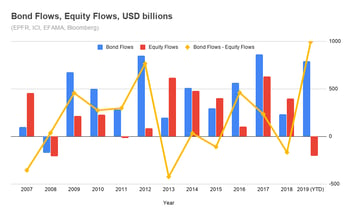As interest rates rise, those with substantial financial portfolios face unique considerations. With the help of proactive scenario planning, we can anticipate potential rate trajectories, develop risk mitigation strategies, and identify emerging opportunities.
Let’s explore several hypothetical interest rate scenarios and how a strategic approach can navigate these complexities.
Section 1: Moderate Rate Increases & Controlled Inflation
Imagine a scenario where rates gradually rise, and inflation remains relatively contained. In this environment, markets could experience measured adjustments. Our disciplined investment process, rooted in research and a robust framework, allows us to analyze potential impacts on your portfolio. Utilizing a hybrid framework of quantitative models, fundamental research, and technical analysis, we construct client portfolios. For example, we might recommend re-evaluating asset allocations, focusing on value-oriented equities and short-term fixed-income, using our research to select appropriate vehicles like mutual funds or ETFs.
Takeaways:
- Debt & Cash Flow: Even moderate rate increases can impact borrowing costs. Strategies like consolidating existing loans or refinancing mortgages become effective strategies for managing cash flow.
- Opportunities: Higher yields on savings and short-term fixed-income investments offer opportunities to enhance portfolio returns without significant risk.
- Purchasing Power: Protecting purchasing power means considering inflation-hedging assets, such as inflation-protected securities, within a well-diversified strategy.
Scenario 2: Aggressive Rate Hikes & Persistent Inflation
A more challenging scenario involves rapid rate hikes coupled with persistent inflationary pressures. This could lead to increased market volatility and economic uncertainty.
Our team continuously monitors your investments, evaluating every aspect of your plan. In this scenario, we focus on defensive sectors and alternative investments, like commodities, with robust risk management protocols. We use our research to derive exposures and find vehicles to best represent them, removing emotion from the investment process.
Takeaways:
- Debt & Cash Flow: Higher borrowing costs can significantly strain cash flow. Prioritizing high-interest debt repayment and reducing discretionary spending is vital.
- Opportunities: Investments in inflation-protected bonds and certain commodities can offer potential returns in this scenario.
- Purchasing Power: Preserving wealth requires a proactive approach, including investing in real assets and carefully managing spending habits.
Scenario 3: Rate Cuts & Economic Slowdown
While less immediate, the possibility of rate cuts due to an economic slowdown should also be considered. This would create a dramatically different investment landscape.
Our top-down approach assesses the economic and investment landscape, considering macro factors. In this scenario, we look to longer duration bonds and growth stocks, using our research to select appropriate vehicles. We help you take advantage of lower rates through debt refinancing.
Takeaways:
- Debt & Cash Flow: Lower rates create opportunities to refinance debt and lock in more favorable terms.
- Opportunities: Refinancing existing debt and securing lower interest rates can significantly improve cash flow.
- Purchasing Power: A slowing economy could ease inflationary pressures, but careful monitoring of economic indicators is still necessary.
Advisor Expertise & Value
Scenario planning is a critical component of wealth management in today’s evolving economic landscape. By understanding potential rate trajectories and their implications, you can make informed decisions to protect and grow your wealth.
At Measured Wealth, we believe in a disciplined, data-driven approach to wealth management. Our team’s expertise. combined with our commitment to proactive communication, allows us to create personalized strategies that adapt to evolving economic conditions.
Disclaimer: The scenarios presented in this article are for illustrative purposes only and do not constitute financial advice. Actual market conditions and economic outcomes may vary significantly.



